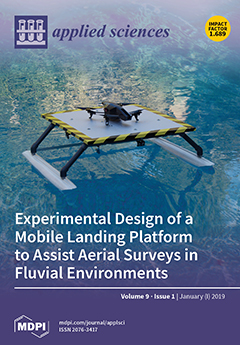A numerical investigation regarding ductility evaluation of steel buildings with moment resisting steel frames is conducted. Bending (
µLϕ) and tension (
µLδ) local ductilities as well as story (
µS) and global ductilities are studied. Global
[...] Read more.
A numerical investigation regarding ductility evaluation of steel buildings with moment resisting steel frames is conducted. Bending (
µLϕ) and tension (
µLδ) local ductilities as well as story (
µS) and global ductilities are studied. Global ductility is calculated as the mean values of story ductilities (
µGS) and as the ratio of the maximum inelastic to yielding top displacements (
µGt). The ductility capacity is associated to drifts of about 5%. Ductility values significantly may vary with the strong motion, ductility definition, structural element, story number, type of analysis, and model.
µLϕ is much larger for beams than for columns. Even though the demands of
µLδ are considered an important issue they are less relevant than
µLϕ.
µS is much smaller than
µLϕ for beams.
µGS for dynamic analysis give reasonable values, but
µGt does not.
µLϕ,
µS and
µGS obtained from pushover are larger than those obtained from dynamic analysis and unlike the case of dynamic analysis,
µLϕ tend to increase with the story number showing an opposite trend. Considering that:
µGt for dynamic analysis results in unreasonable values, pushover analysis does not consider energy dissipation, the strong column–weak beam (SCWB) concept was followed in the model designs, and
µLδ is not relevant in framed steel buildings, the ratio (
RLG) of global to local ductility capacity is calculated as the ratio of
µGS to
µLϕ of beams, for dynamic analysis. A value of 1/3 is proposed. Thus, if bending local ductility capacity is stated as the basis for the design, the global ductility capacity can be easily estimated.
Full article





